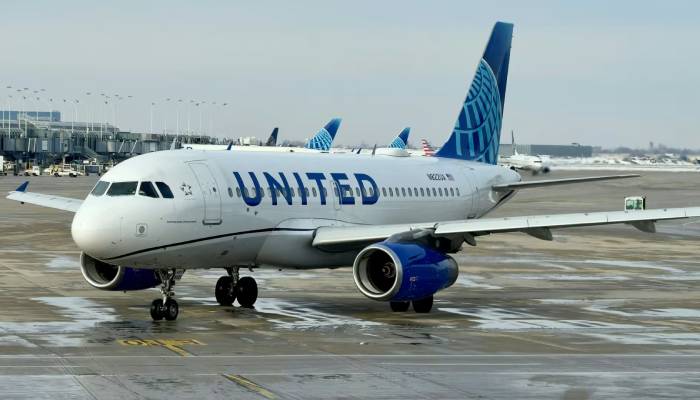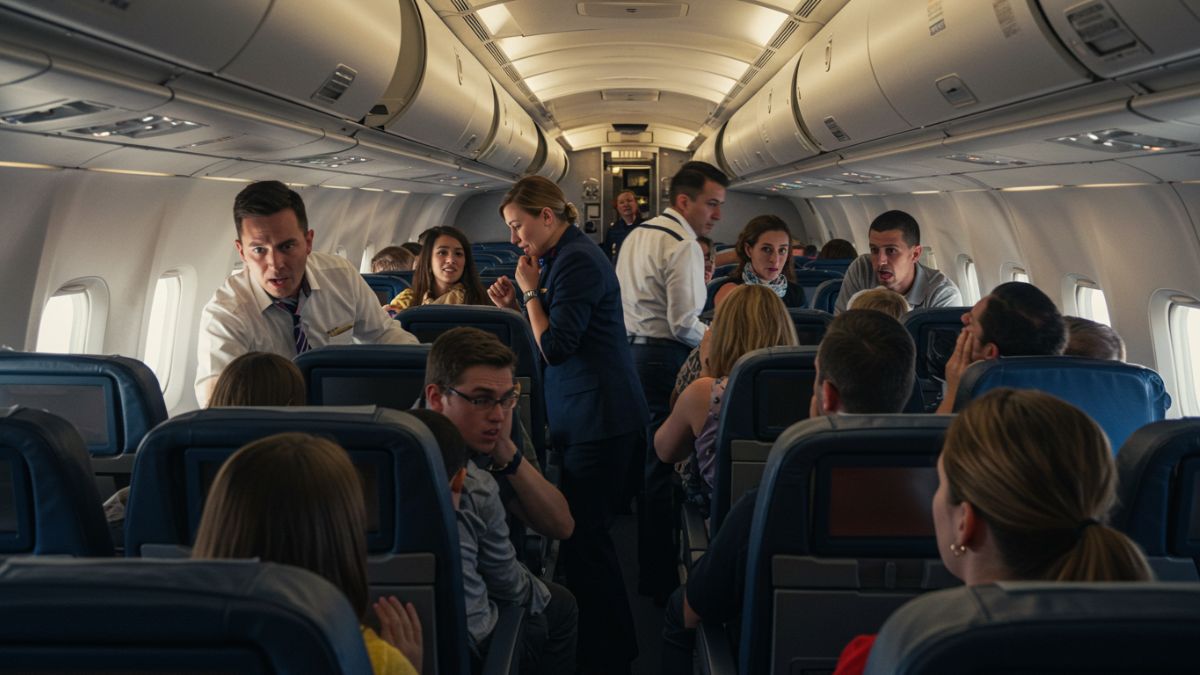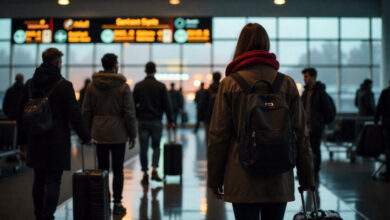United Airlines Flight UA770 Emergency Diversion

On what was expected to be a smooth and uneventful journey, United Airlines Flight UA770 Emergency Diversion became a major topic of discussion across global aviation platforms. The aircraft, which had departed on schedule, encountered an unexpected in-flight situation, leading the pilots to make a critical decision to divert. This incident not only alarmed passengers but also highlighted the importance of aviation safety and rapid response procedures. In a world where air travel is often considered the safest mode of transportation, emergency diversions like this remind us of the precision and preparedness required at every level of flight operations.
The route for Flight UA770 was planned meticulously, like all commercial flights, with thorough weather checks, technical inspections, and communication protocols in place. However, even with the most advanced technology and experienced crews, unforeseen circumstances can emerge mid-air. Passengers were initially unaware of the seriousness of the situation as the flight continued its journey, but when the captain made the announcement, the gravity of the moment became evident. The swift response from the crew and air traffic control ensured the aircraft landed safely, demonstrating how crucial quick decisions are during emergencies.
Media reports and eyewitness accounts quickly spread across social platforms, with many praising the calm and professionalism displayed on board. United Airlines Flight UA770 Emergency Diversion became a trending topic, with many travellers curious about how such situations unfold. As investigations unfolded, more details revealed just how critical every second was in ensuring the safety of everyone on board.
Timeline of the Emergency Diversion
The United Airlines Flight UA770 Emergency Diversion took place during the cruise phase of the journey, when the aircraft was flying steadily at 35,000 feet. At this altitude, pilots typically monitor instruments closely, and cabin crew begin their service, creating a sense of normality. However, shortly after reaching cruising height, an abnormal reading on the aircraft systems alerted the cockpit crew. Within minutes, the captain and first officer followed standard operating procedures, assessing the situation while maintaining communication with air traffic control.
The timeline was fast-moving. After detecting the irregularity, the crew made a “Pan-Pan” or “Mayday” call, depending on the severity, to alert controllers of the need for priority handling. The flight path was adjusted swiftly, with controllers coordinating a clear route to the nearest suitable airport. Passengers were informed calmly, with reassurance that this was a precautionary measure. The aircraft then began a controlled descent, preparing for an unscheduled landing.
As the plane descended, emergency services on the ground were mobilised. Fire trucks, paramedics, and airport operations teams stood ready to receive the flight. Landing was smooth, and despite the heightened tension, passengers reported feeling safe due to the professionalism of the crew. This quick, coordinated timeline is a testament to how structured and well-rehearsed airline emergency protocols are. Every step was timed, rehearsed, and executed with precision, ensuring no lives were put at risk.
Investigating the Cause Behind the Diversion
After the aircraft was safely on the ground, attention turned to understanding what exactly caused the United Airlines Flight UA770 Emergency Diversion. Early reports suggested a technical fault detected in one of the aircraft’s onboard systems. Although modern planes are designed with multiple redundancies, any irregularity in vital systems requires immediate attention. It’s standard practice for pilots to prioritise safety over everything else, which is why diversions are often precautionary rather than due to immediate danger.
United Airlines, in coordination with aviation authorities, initiated an investigation to examine flight data records, system logs, and crew reports. Technical experts began evaluating whether the fault was related to engine performance, pressurisation, or another critical system. Passengers were reassured that such incidents, though unsettling, are well within the capabilities of experienced flight crews and ground technicians.
Aviation analysts noted that modern airliners like those operated on the UA770 route are equipped with advanced safety technology. This technology can detect even minor anomalies and alert the crew before they escalate. Although official findings take time to be released, the initial evidence reinforced that the diversion was a proactive step to ensure maximum safety, not a response to imminent disaster.
Passenger Experience and Response

For passengers on board United Airlines Flight UA770 Emergency Diversion, the incident turned what began as a routine flight into an emotionally charged and unforgettable journey. According to several passenger accounts, the first indication that something was amiss came when the in-flight service was paused, and the captain addressed the cabin over the intercom. His calm and confident tone helped ease panic before it could spread, assuring everyone that they were diverting as a precaution.
The cabin crew played a vital role during these moments. Their training kicked in, and they moved through the aisles ensuring everyone was secure and calm. Passengers recalled how the professionalism and clear communication of the crew helped reduce anxiety, even as the plane began its descent. One traveller described it as “tense but controlled,” praising the swift actions and reassurance provided.
Once the aircraft landed and taxied to a secure area, ground teams boarded to assist. Passengers were provided updates, refreshments, and alternative travel arrangements. United Airlines also arranged accommodation and compensation for those whose travel plans were disrupted. While such situations can be unnerving, many travellers later expressed gratitude for the airline’s efficient handling of the situation, highlighting how proper crisis communication can make a significant difference.
Official Airline and FAA Statements
Shortly after the incident, United Airlines issued an official statement confirming the United Airlines Flight UA770 Emergency Diversion and emphasising that passenger safety remained their highest priority. The statement outlined the steps taken by the flight crew, including the decision to divert as a precautionary measure following a technical alert. They reassured the public that at no point was the aircraft in immediate danger, and that the diversion allowed ground teams to thoroughly assess the aircraft before it continued operation.
The Federal Aviation Administration (FAA) also released an initial report acknowledging the diversion and confirming that their investigators were working closely with United Airlines to identify the root cause. This level of transparency is standard practice, as it helps ensure accountability and reassures travellers of aviation safety standards. The incident also sparked public discussions online, with many travellers sharing their own diversion experiences and praising the effectiveness of aviation protocols.
Media coverage amplified the event, but unlike more severe emergencies, this diversion was largely framed as a well-handled safety precaution. Experts highlighted that quick decision-making by pilots is the cornerstone of modern aviation safety.
Aviation Safety Protocols and Lessons Learned
Aviation operates under a strict safety-first culture, and incidents like United Airlines Flight UA770 Emergency Diversion illustrate why these protocols exist. Commercial pilots are trained extensively to handle in-flight irregularities, and they undergo frequent simulator training to rehearse diversion procedures. Cabin crew also receive emergency response training, ensuring that passengers are protected not only by technology but also by human expertise.
Standard protocols dictate that when an issue arises, the crew must assess the severity, inform air traffic control, and divert to the nearest suitable airport. These steps are taken regardless of passenger inconvenience because the ultimate priority is preserving life. The UA770 incident reinforced the effectiveness of these protocols in real-world scenarios.
Moreover, every diversion contributes to improving the industry. Post-incident reports are analysed, findings are shared, and safety measures are updated. This continuous learning cycle is why aviation remains one of the safest forms of transportation today.
Conclusion
The United Airlines Flight UA770 Emergency Diversion stands as a reminder of how unpredictable situations can arise, even in the most controlled environments. Thanks to the quick action of the flight crew, coordinated ground support, and adherence to safety protocols, what could have escalated into a more severe situation ended with all passengers safe.
This incident highlights not just the technology behind modern airliners but also the human skill, training, and decision-making that underpin every flight. While diversions can be unsettling, they are often evidence of a system that prioritises safety above all else.
Frequently Asked Questions
What caused United Airlines Flight UA770 to divert?
The United Airlines Flight UA770 Emergency Diversion was due to a technical irregularity detected mid-flight, prompting the crew to land at the nearest suitable airport as a precaution.
Was anyone injured during the incident?
No injuries were reported. The diversion was handled calmly and efficiently, ensuring passenger safety throughout.
How common are emergency diversions in commercial aviation?
They are relatively uncommon but not rare. Most diversions are precautionary, related to technical or medical issues.
What protocols do airlines follow during an in-flight emergency?
Airlines follow structured protocols involving crew communication, coordination with air traffic control, and prioritised landing at the nearest safe airport.
Will this incident affect United Airlines’ safety record?
No. Diversions handled correctly are viewed as evidence of strong safety procedures rather than failures.
How are passengers compensated after an emergency landing?
Passengers are usually offered alternative flights, accommodation if needed, and in some cases, financial compensation or travel credits.
What should travellers do if their flight is diverted?
Passengers should remain calm, follow crew instructions, and trust that diversions are carried out with their safety as the top priority.
Also Read: Kian William Jarrahy

